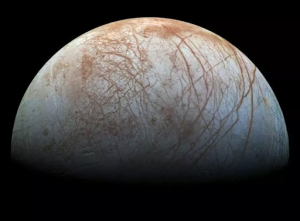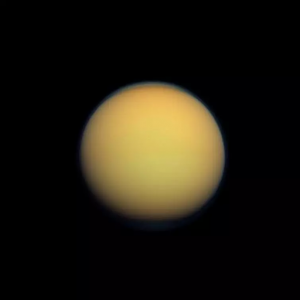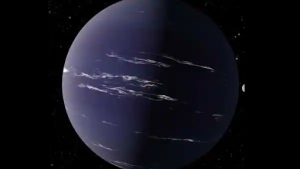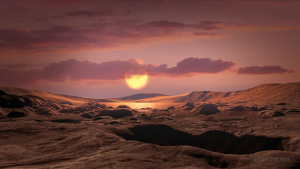The Universe is constantly expanding. Our knowledge of the universe is constantly expanding as well. As we reach further and further into the solar system and space, and the threat of climate change lingers on, astronomers turn to the idea of ‘space colonies’ or habitable planets outside our solar system as the future of humanity. The problem is that we have such a small range of temperatures and conditions where we can function, for example, we need oxygen, water, food and our body operates the best between 0-50 degrees celsius. This ultimately begs the question, could we ever find a second Earth?

Within our solar system:

- The first of our candidates is Europa. Discovered by Galileo in 1610 as being one of the 4 large Jupiter moons, the surface is a vast expanse of water ice, and scientists believe that underground, there may be liquid water, evidenced by the explosion of geysers through cracks of the surface. At the bottom of this presumed sea, there may be hydrothermal vents, which already support diverse ecosystems here on Earth.
- Secondly, we have Enceladus, yet another moon but orbiting Saturn. It is also covered by ice and was considered to be potentially habitable after the discovery of enormous geysers in the South Pole, which can be seen as being a potential liquid water store underground. Also, the discovery of tiny grains of rocky silicate particles can be interpreted as being evidence for hydrothermal vents on the ocean floor, providing the chemistry needed for life.
- Finally, we have Titan, which abandons the need for water and focuses on the importance of an atmosphere. It is the largest moon of Saturn and the only moon in the solar system with a substantial atmosphere. Its weather cycle is similar to Earth but instead has a methane cycle rather than a water cycle meaning that it has seasonal rains, dry periods and surface sand dunes created by wind. The atmosphere consists mostly of nitrogen, similar to how it was on early Earth and further observations have detected rivers of ethane and methane and even cryovolcanoes – which erupt water instead of lava. However, the issue is that since it is so far from the Sun, it leads to very cold temperatures of -180˚C which is too cold for water and humans, but it could sustain other forms of life, or even a space colony.

Exoplanets:
An exoplanet is a planet outside our Solar System. Many of these have been discovered recently due to developments in space technology. A handful of these have been labelled potentially habitable, as they adhere to an important aspect of human life, whether it be liquid water or the same size and shape of the Earth.
- The first one is KOI 5715.01. It is around the same age as the Earth at being over 5.5 billion years old and orbits an orange dwarf star 2,965 light-years away from Earth. After more research, it is predicted that the temperature is around 4.3 degrees F (2.4 degrees C) cooler than Earth with a 1.8 or 2.4 times larger diameter. With more research about its atmospheric composition, and if it is discovered to have greenhouse gases to trap the heat like on Earth, it may be super-habitable.

- Secondly, the discovery of TOI-1231 b has been intriguing. It is an exoplanet with a more bearable temperature of 56.75 degrees, which is frigid compared to other exoplanets with scorching or freezing temperatures. It is 90 light years away from Earth and it is 3 times the size of Earth similar to Neptune but with a 24-day orbit. Astronomers predict that there may be clouds and evidence of water. It is predicted that there may be a hydrogen helium atmosphere or a water vapour atmosphere. However, there is a lot of promise for this exoplanet, as it is within the reach of scientists to carry out atmospheric research, unlike KOI 5715.01.

- Finally, a planet that was almost lost in the records, named Kepler 1649c. In 2018, after 9 years, the Kepler spacecraft ran out of fuel and faded into the realms of the unknown, but it had discovered over 2,400 exciting exoplanets. Recently, scientists have re-examined the results, and a planet that the AI ruled out, was double checked and now Kepler 1649c is seen as being a potentially habitable planet. It is around the same size as Earth and receives around 75% of the light that the Earth receives from the Sun. It is only 300 light years away from Earth and is a rocky planet. However, with any exoplanet, there are problems and this one orbits a red dwarf star, much smaller than the Sun with stellar flare-ups that could make sustained life challenging. It also has a year that lasts 19.5 days.

As space exploration develops and expands, maybe one day astronomers can find a planet that is habitable or discover more about these planets and moons and see if they are fit for human living. The idea of space colonies is also very intriguing with Elon Musk leading the way for a Mars colony, but with space, the greatest asset is time and with time, maybe we will be able to discover a planet that could be the second Earth. However, while our first Earth is habitable, we at NSTEM believe that it is important to take care of our planet and use our resources efficiently without harming the Earth.
Written by: Hussam Waseem
